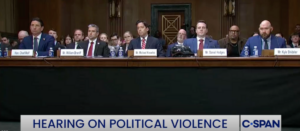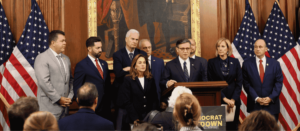Every child deserves educational freedom. At Concerned Women for America Legislative Action Committee (CWALAC), we saw landmark developments in the states for the school choice movement during National School Choice Week.
Gov. Kim Reynolds (R-Iowa) listened to the voices of parents in Iowa and signed key education policy into law. Under Iowa’s Students First Act, state education funding—an estimated $7,598 per student—can go to K-12 students who choose to attend private schools and pay for their schooling and other qualified education expenses.
Gov. Spencer Cox (R-Utah) signed into law the Utah Fits All Scholarship Program. Eligible students can apply for and receive an $8,000 per-year scholarship for qualified education expenses, with preference for lower-income families and a program cap of $42 million per year.
In Arkansas, Gov. Sarah Huckabee Sanders’ (Republican) signed an executive order—her first in office—that directs the Secretary of the Arkansas Department of Education and the Arkansas State Board of Education to create “policies that streamline processes to continue, expand, and replicate effective charter schools.”
No student should be forced to attend failing schools or schools that denigrate their beliefs and values. Unfortunately, parents have seen far too much of this, and the problem accelerated during the pandemic. These actions by Govs. Reynolds, Cox, and Sanders empower parents to choose the best education for their children and advance education freedom. A key component of education freedom is educational choice—at CWALAC, we focus on choice in the forms of education savings accounts and open enrollment. CWA has already identified target states to advance the mission for educational choice: Florida, Louisiana, South Dakota, Texas, and Virginia. In each of these states, more can be done.
Iowa’s Students First Act, as mentioned, above, creates an education savings account (ESA). ESAs vary from state to state, but generally speaking, ESAs are publicly funded, are administered by the state government, and use state funding already allocated for the student. ESAs are used to provide an education in reading, grammar, mathematics, social studies, and science. ESAs allow a parent to purchase vetted educational services to tailor a learning experience that meets a student’s needs.
Every student must have access to an ESA, like in Iowa and the nine other states that have adopted ESAs that are publicly funded: Arizona, Florida, Indiana, Mississippi, New Hampshire, North Carolina, Tennessee, and West Virginia. An ESA helps fulfill the proper goal of education to impart knowledge to students and teach them how to think, not what to think.
Open enrollment refers to the policy of allowing students to request to transfer to another school either within a school district (intradistrict open enrollment) or outside of the school district (interdistrict open enrollment) in which the student resides. Over half of the states have policies permitting intradistrict or interdistrict open enrollment. Fourteen states require interdistrict open enrollment for all grade levels.
Of those 14 states, five states—Arkansas, Florida, Iowa, South Dakota, and Tennessee—have the strongest policy because they require schools to accept transfer requests, subject to capacity of the receiving school. Gov. Sanders’ executive order builds on Arkansas’ strong foundation in what is sometimes called “public school choice.”
Every student must have access to transfer-request acceptance as in Arkansas and the other four states. Without it, there is a risk of open-endedness in transfer policies that give schools the latitude to create policies that prioritize the preservation of an institution rather than an individual student’s quality of education.
The remaining nine states require schools to have policies for transfer requests but do not require acceptance of transfer requests: Arizona, Colorado, Delaware, Idaho, Kentucky, Nebraska, Oklahoma, Utah, and Wisconsin. Open enrollment that is interdistrict, available for all grade levels, and available for any reason (subject to capacity) gives even more options to the parents and the student to achieve maximum educational outcomes.
A zip code should not determine a student’s success. The pandemic, despite its many tragedies, has resulted in an opportune climate for change in education policy. For this year’s National School Choice Week, more parents are experiencing more meaningful choice in their student’s education.






